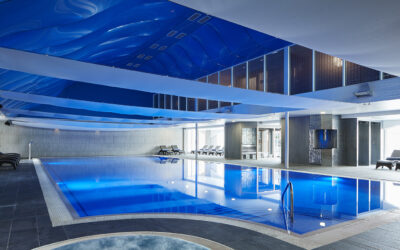Marble Tiles – Getting What You Pay For
To paraphrase Star Trek’s very own Mr Spock, “It’s marble tile Jim, but not as we know it.”
The world of producing marble effect ceramic and porcelain tiles has changed greatly over the years, with technology advancing to the point where many would struggle to differentiate a tile from the natural stone.
The benefits of marble tiles over the natural form of the stone – cost, maintenance and installation – are also well documented.
And yet the market is still flooded with sub-standard products at lower prices that really don’t stand up to close inspection from an aesthetic point of view. This leads to retailers and distributors being challenged on price, which can be frustrating for those of us that only deal with quality producers and products.
The technology that is utilised in the printing processes for emulating white marble – one of the UK’s favourite decorative stone surfaces – has developed way, way beyond the simple single-image repeat of the ‘80s, and so we have all become used to seeing the incredibly realistic non-repeating textures and veining.
Digital printing now comes as standard for both ceramic body wall tiles and porcelain body wall/floor tiles, and so the level of engineered cost within a tile is often reflected in the selling price, on the basis of it being decorative only or, in the case of porcelain, decorative as well as having the necessary performance characteristic of strength.
And so, more often than not, it is the actual printing that can make two tiles with broadly the same marble effect come in at totally different prices.
For example, on the replication of the popular Statuario or Calacatta marbles, if you take a cheaper product and look very closely at the printing of the vein which forms the grey/gold coloured elements of the design on a white background, the pixilation is often very obvious. You can see how the printhead, which squirts the design, has done so in a manner where each tiny dot of ink can be individually observed. When viewed at a distance it looks OK, but sitting in your bath, or standing under your wet room shower it looks poor.
So, although the print technology is hi-tech compared to the single print or multi-print screens of the past, a low-tech version of the design has been incorporated and the result has significantly reduced the level of realism, resulting in a tile which has far less aesthetic appeal.
In layman’s terms cheaper, but nowhere near as nice to look at.
Typically, it’s the Italian top line factories, who pay a much higher level of attention to this detail in their R&D, that get it right as they strive to produce the most accurate copy of the stone. And they do this because it is the best way to attract customers away from the hassle and expense of fixing real marble.
From a retailer perspective we would offer this advice – stock the best quality you can and don’t tell your customers to stand back and admire the tiles. Instead hand them a magnifying glass and challenge them to not be amazed at the print quality, then you won’t need to justify the price.





